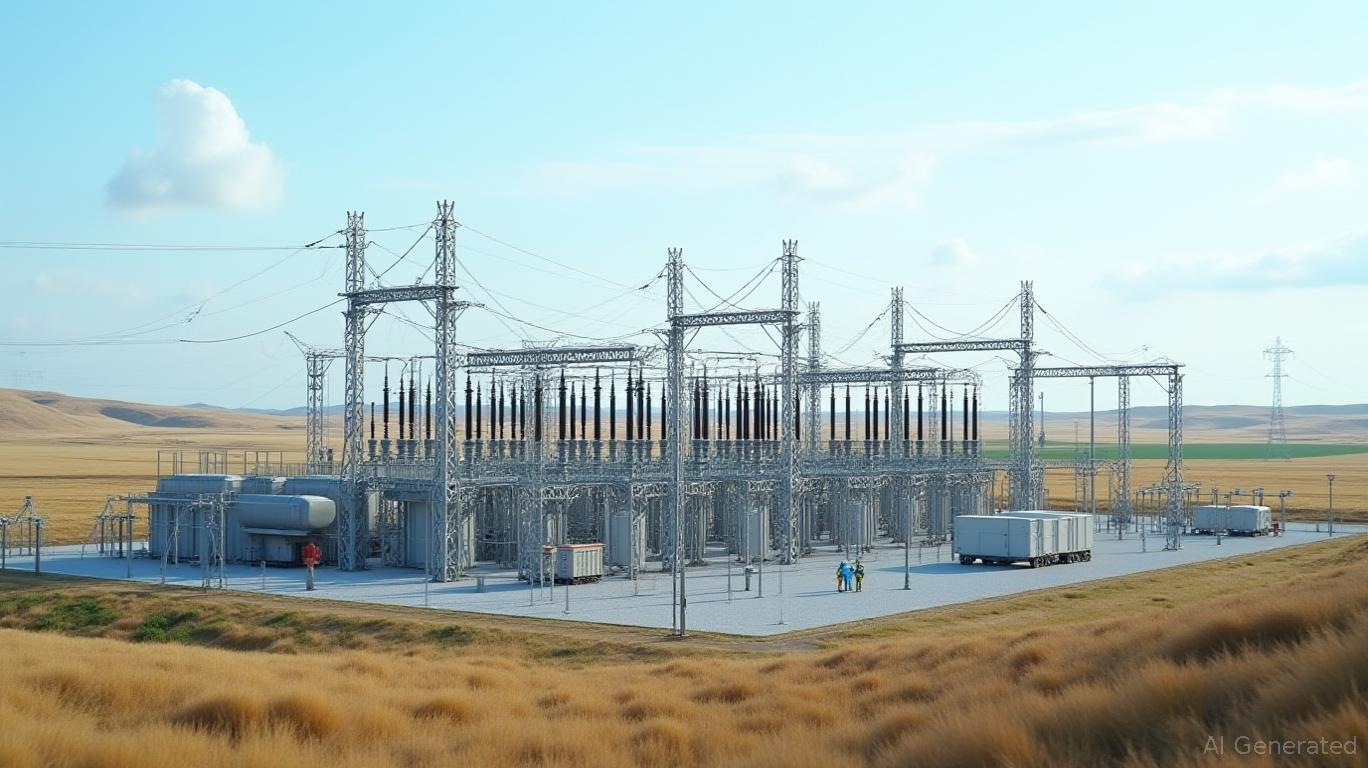NIPSCO's Rate Adjustments: A Strategic Pivot Toward Long-Term Value and Grid Resilience
The Indiana Utility Regulatory Commission's (IURC) recent approval of Northern Indiana
Company LLC's (NIPSCO) phased rate adjustments marks a pivotal moment for the utility's long-term trajectory. By securing the go-ahead for incremental increases from July 2025 through early 2026, NIPSCO has positioned itself to pursue a dual mandate: modernizing its infrastructure while mitigating risks to customer affordability. This decision, the product of a collaborative process involving regulators, industrial stakeholders, and consumer advocates, underscores the company's strategic balancing act between growth, reliability, and regulatory stability. For investors, the move signals a deliberate path to long-term value creation in an era of energy transition and grid resilience demands.The Rate Adjustments: A Calculated Compromise
The approved rate increases, while significant—projected to raise average monthly bills by $23 for residential customers—represent a notable reduction from the initial $32 proposal. This compromise reflects NIPSCO's acknowledgment of affordability concerns, particularly in an economy where energy costs weigh heavily on households. The phased implementation further softens the financial blow, distributing the burden over time. Yet the primary purpose of the adjustments is clear: to fund a $2.76 billion capital investment plan aimed at overhauling the grid and transitioning to a diversified energy portfolio.

Infrastructure Investments: The Foundation of Reliability and Renewables
At the heart of NIPSCO's strategy is a $2 billion commitment to shift its generation mix toward cleaner energy sources, including wind and solar, while retiring coal-fired plants. An additional $769.5 million will target grid modernization: replacing aging poles, expanding substation capacity, and deploying smart technologies to reduce outage durations. These investments have already delivered measurable results, with outage durations cut by 40% through upgrades like underground cable replacement and wood pole treatments.
For utilities, infrastructure spending directly expands the “rate base”—the value of assets eligible for regulated returns. This is critical for equity investors, as a growing rate base underpins stable earnings. NIPSCO's investments, therefore, are not merely operational expenses but strategic assets that should drive long-term revenue growth.
Regulatory Risk Mitigation: Collaboration as a Competitive Advantage
The approval process itself offers a case study in regulatory engagement. NIPSCO worked closely with the Indiana Office of Utility Consumer Counselor (OUCC), industrial users like United States Steel, and
to refine its proposal. This collaboration likely eased concerns about rate shock and ensured alignment with local economic needs. The inclusion of robust customer assistance programs—such as bill payment aid for low-income households and waived reconnection fees—further insulated the company from public backlash.The lesson here is that utilities navigating rate cases must prioritize stakeholder buy-in. NIPSCO's success suggests that transparent, compromise-driven negotiations can reduce regulatory uncertainty, a key risk factor for utility equities.
Long-Term Value: Renewables and Rate Base Expansion
The real prize for investors lies in NIPSCO's renewable energy pivot. By retiring coal plants and investing in wind/solar projects, the company is aligning with state and federal clean energy mandates. Indiana's 2022 law requiring 100% carbon-free generation by 2050 creates a regulatory tailwind, while federal tax incentives for renewables amplify the economic case for these projects.
Crucially, renewable investments typically qualify for higher rate base returns due to their capital intensity. could soon reflect this dynamic if earnings growth materializes. Meanwhile, NIPSCO's promise to return 100% of excess power sales revenue to customers—a unique feature—builds trust and reduces the regulatory scrutiny often faced by utilities with profit-driven energy portfolios.
Risks and Considerations for Investors
While the long-term outlook is promising, near-term headwinds remain. The rate increases, even at the reduced level, could strain customer affordability, potentially leading to payment defaults or political pushback. Additionally, the success of the grid modernization plan hinges on execution risks, such as delays or cost overruns.
Investors must also monitor NIPSCO's credit profile. The $2.76 billion investment program will likely increase debt levels, though the utility's strong cash flows and regulated returns should keep leverage manageable.
Conclusion: A Utility for the Energy Transition Era
NIPSCO's rate adjustments are not merely a financial maneuver but a strategic reallocation of capital to future-proof its business. By prioritizing grid resilience, renewable energy, and customer support, the company has laid the groundwork for steady growth in an industry primed for transformation. For investors seeking stable, regulated returns with exposure to decarbonization trends, NIPSCO's blend of rate base expansion and risk mitigation makes it a compelling utility play. While short-term volatility is possible, the long-term value creation narrative is clear: a utility engineered to thrive in the energy transition.
Investment recommendation: Consider a gradual position in NIPSCO for portfolios seeking exposure to regulated utilities with clear growth catalysts. Monitor regulatory filings and execution timelines for upside confirmation.

Comments
No comments yet